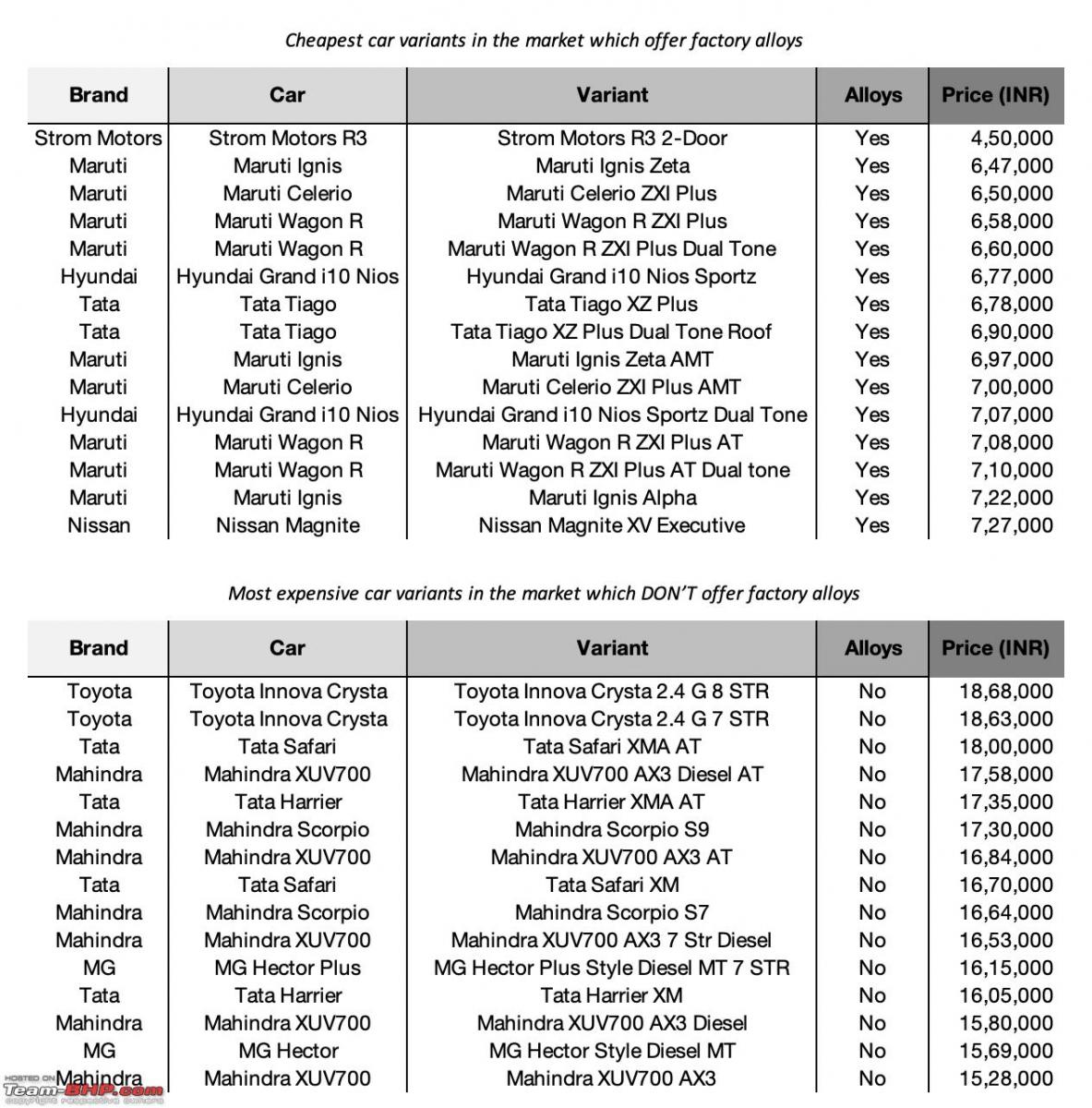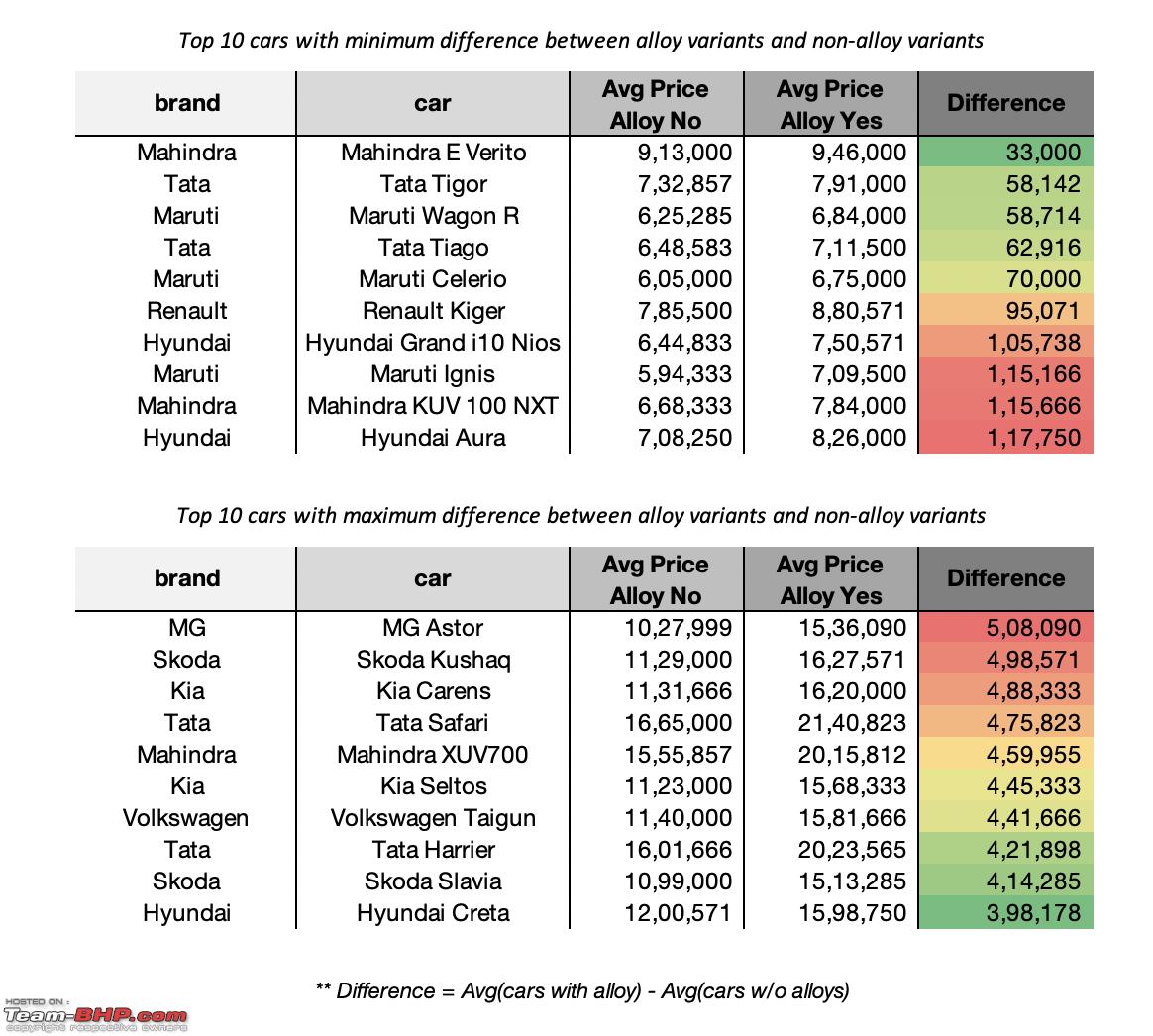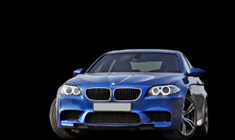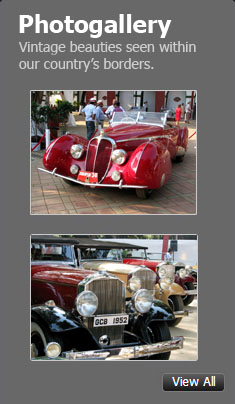News
Alloy wheels: A preliminary analysis in the Indian context
I was honestly not expecting the hatchback segment to have over 50% representation of cars with factory alloys.
BHPian akshaysehgal recently shared this with other enthusiasts.
Alloys - art on wheels! An analysis of factory alloys on Indian Cars
The invention of the wheel by mankind around 3500 B.C. is widely considered the second most important invention that shaped human history (after Fire!) but did you know it was not actually invented for the purpose of transportation? The first role it played, was to build a thing of function and beauty - pottery. It took 300 years for someone to put the wheel on a cart. How poetic it is then, that even today, the wheel exists not only for its function but also to adorn, embellish, and beautify one of the most important machines owned by man - cars.
This article explores only the aesthetic side of the wheel - the alloys. I read somewhere, that if you find your neighbor's car really attractive but can't really put a finger on why, it's most probably their alloys. It can be subtle but makes a big impact on how a car looks. The aftermarket in 2020 was estimated to be 0.5 million alloy wheels sold across India according to Business Today and the demand has been exponentially increasing since. Even though this demand is mostly based on the aesthetic needs of the car enthusiast, alloys do bring some function to the equation with their lighter weight and resistance to corrosion, jacking up the fuel economy and longevity of the car itself.

The goal here is to present a preliminary analysis of Indian car market data to see which brand, segment, and price points correlate with the alloy options manufacturers provide for their car variants on sale in India. Hopefully, this helps inform and entertain the enthusiast community here at Team-BHP.
Disclaimers:
- Credit where it's due - this amazing idea originated from the inquisitive mind of my brother-in-law Varun who is a passionate Skoda owner, and a car enthusiast looking for his next set of wheels to enjoy.
- This data was sourced by me using crawlers I set up. It is only for exploration purposes and definitely not for sale/sharing due to the obvious IP issues involved.
- I am not an expert on anything related to cars and everything I present here comes from the data I used for this. So please take all of this with a grain of salt. In data I trust, but you don't need to do the same
- There are limitations to what can be answered with any data but that should not restrict the queries we can ask. So I encourage the readers to ask questions in this thread as this would help me preset future analysis on other areas related to car prices, specs, variants, features, etc.
- The data I will explore corresponds to 36 car brands, 230 cars, and 1300+ car variants with ~300 variables (specs, prices, features) with a snapshot pulled on 7th June 2022. This should be a good representation of the actual Indian car market as of the date of posting this thread.
Please forgive my horrible puns. I wheel try to do better in the future.
1.0 Thou shalt not covet thy neighbor's alloys
Car brands have started focusing on the enthusiast market by adding some of the after-market features as factory defaults, including alloy wheels. But do all brands consider it to be a value addition for their customers equally?
Here I present the percentage of car variants with factory alloys sold by different brands. I divide the brands into 2 categories for the sake of better comparison based on a few heuristics I found relevant - common and uncommon. I want to avoid labeling a brand, "luxury", as it doesn't seem to be the right taxonomy for what I want to present here.
- Common brands include - Maruti, Datsun, Renault, Strom Motors, Hyundai, Tata, Nissan, Mahindra, Volkswagen, Toyota, Honda, Kia, Mitsubishi, MG, Skoda, Isuzu, Jeep
- Uncommon brands include - BYD, Citroen, Audi, Mini, BMW, Mercedes-Benz, Volvo, Jaguar, Lexus, Land Rover, Porsche, Maserati, Aston Martin, Lamborghini, Bentley, Ferrari, Rolls-Royce

What I see very clearly is that most of the "uncommon" brands always come with alloys across all variants in general, but it seems the Indian brands still need to truly embrace the idea behind alloys, as they fall a bit short. The Korean, Japanese (except Datsun) and Chinese brands definitely do consider alloys to be a strong value add for their customers, which is reflected in the data.
If you are in the market for a car and the alloys can be a serious criterion for you, then remember, Datsun and the French brand Renault don't see eye to eye on this with you! Their priorities lie in other features they offer.
Let's explore this further though. From the point of view of a potential buyer, which are the cheapest car variants that come with an alloy? And on the flip side, which car variants are the most expensive yet don't provide factory alloys? Here are the top 15 for each -

Interestingly, the cheaper cars with alloys and the expensive cars without alloys both seem to have some representation by Tata. However, if you are looking for a car in the first category, it seems Hyundai and Maruti will definitely fit your bill.
It's surprising that the latter list is so densely populated with Mahindra cars. Please wake up Mahindra, your customers need factory alloys if they are paying that much for your cars! The cake is however taken by some variants offered for Innova. At this point for over 18 lakhs ex-showroom price, it seems alloys should come as default?
2.0 Alloy, mateys!
As you may or may not have guessed, this part of the analysis is to figure out how much "gold" a brand might "plunder" from you if you choose to upgrade to a variant with alloys.
IMPORTANT! - I compare the average price of variants with alloys vs the average price of variants without alloys of the same car (or brand). Please note that this price difference is obviously due to a lot of other specs and feature upgrades and NOT just due to the alloys. So, at best, these numbers simply suggest how much more premium would you have to pay (on average) to upgrade your car/variant of choice to one with factory default alloys.
Let's look at the premium you pay (on average) for purchasing a car with alloys (and other features and upgrades of course) at a brand level. Again I only compare brands that fall into the "common" category I defined above, and cars that have variants with and without alloys on sale.

Interestingly, the premium you would have to pay on average, to get a car with factory alloys (and additional features) is around 4.5 lakhs for Skoda, which is higher than all other German, Korean, Japanese, and Indian brands. This is clearly also because Skoda would be offering more features in these cars and their variants along with the alloy upgrades as well. Hyundai sits dead center which made the miser in me very happy! (I own an i20 N line, check out my ownership review).
After that shameless self-promotion, let me go one level deeper and analyze this difference at the car level. Again, like before, please interpret these numbers as the premium you would have to pay, on average, if you upgrade from a car variant without alloys to one that has alloys (for the same car).
Here are the 2 lists of the lowest and highest differences in average prices for variants -

It was wonderful to see that Indian brands offer alloys in the upper variants for a lesser premium than others. Of course, this is due to the average price of the cars sold by these brands as well (which can be used to normalize these numbers further), but it's good to see how much absolute premium one has to pay for such an upgrade.
When comparing variants, do make sure to check all other features offered along with the alloys, unless the only thing you care about is the alloy wheels!
3.0 Beauty comes in all alloys and sizes
The third area that I wanted to explore was the distribution of factory alloys across the types of cars in the market - Hatchbacks, Sedans, SUVs, MUVs, and Hybrids to be specific.

Two surprising things come out of this. I was honestly not expecting the hatchback segment to have over 50% representation of cars with factory alloys. It seems that the A and B segments have started to cater to the enthusiast in India. Hoping to see this percentage grow in the future!
The other surprising fact that I see is that SUVs have a higher representation than Sedans when it comes to alloys. I would think, that being a more functional car type, an SUV manufacturer would aim at prioritizing utility over aesthetics and vice-versa for sedans. It seems that as of today if you buy an SUV, factory alloys are pretty much the default, which is great since they are all the rage right now!
Similar to my above analysis, I wanted to explore the cheapest and most expensive options, with and without alloys respectively, for each car type. I'll add these below as I think these would be very useful for someone in the market for a specific segment.

4.0 Conclusion
Based on my findings, I can conclude that, while some brands definitely prioritize factory default alloys as an important offering to their customers, it seems they still keep this feature as a method to distinguish and justify the price difference between their base and top-tier car variants, which doesn't feel right when it comes to cars already in higher segments.
It seems that for the cheaper cars, alloys are given to add value. While for expensive cars, alloys are just taken away to justify a price for the top variants.
So I ask the readers this question - if you are paying over 10-15 lakhs for a car in India, would you expect alloys to be a default, irrespective of the variant?
With that, I will leave the readers with this horrible pun -
If the silver surfer and iron man teamed up, they'd be alloys..
P.S. - Please let me know if you have any additional queries that I might have missed here. If the data can answer those, I would be happy to post some analysis on this thread.
Read BHPian comments for more insights and information.
- Tags:
- Indian
- Member Content
- Alloy wheels










.jpg)







